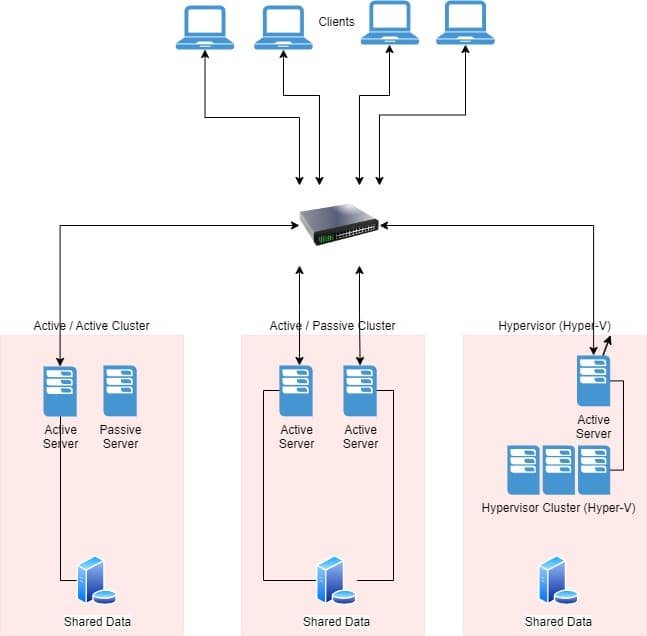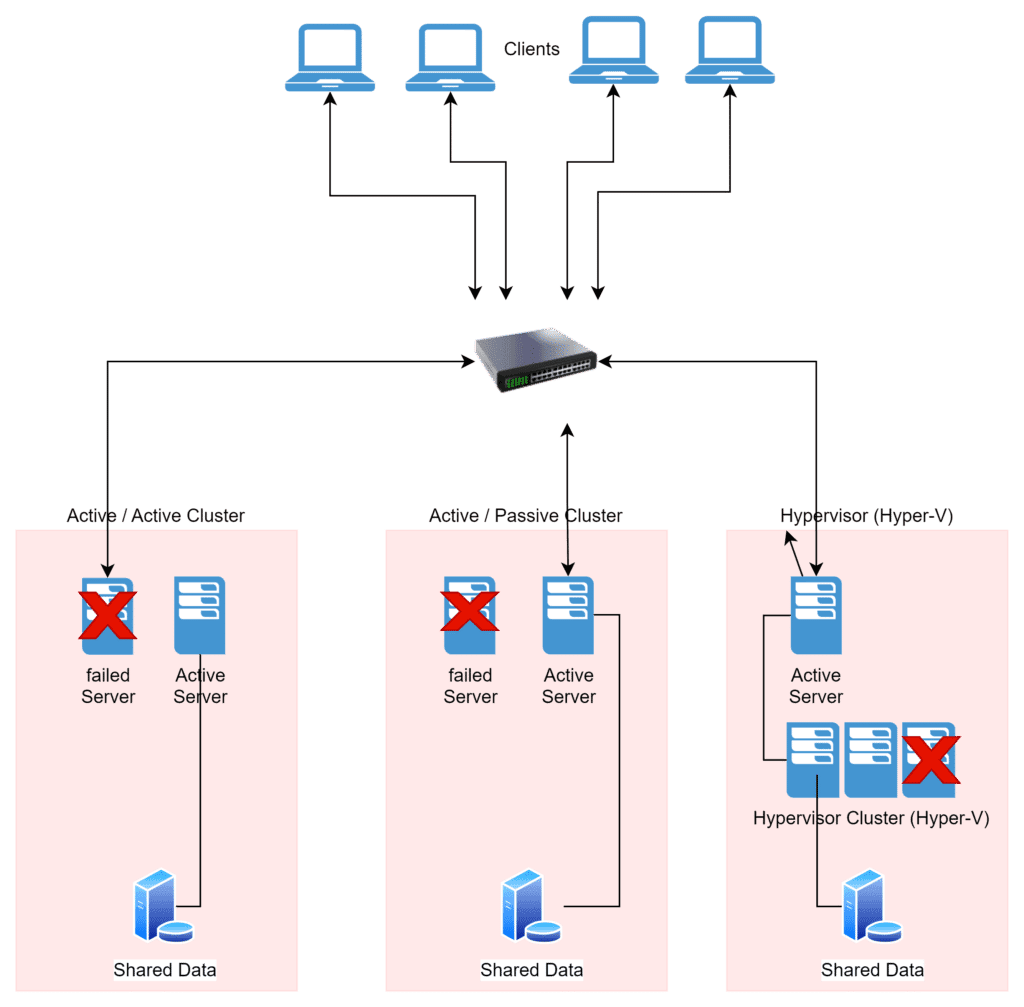IT Architects often use abbreviations in the Architectural Elevator and this often doesn’t help our conversation partners with architectural topics. Today I will explain some abbreviations on the subject of clusters.
Table of Contents
Dealing with abbreviations
If you want to use the Architectural Elevator, give your “stakeholder” the chance to know the term. One variant is to use the long form several times and only then switch to the abbreviation.
If you are interested in the topic of Architecture Elevator and have not yet heard of it, take a look here. I will also be addressing the topic here in the blog over the next few weeks.
Abbreviations in the Architectural Elevator – Cluster and “HA”
Cluster and high availability (HA) are two terms that are frequently used in IT infrastructure. A cluster is a group of servers that work together as a unit to provide an application or service. HA, on the other hand, refers to the ability of a system to remain continuously available in the event of a fault or failure. In this article, we take a look at three types of clusters and how they can help improve high availability
Cluster
A cluster is a group of servers that work together as a single unit to provide an application or service.
High availability (HA)
High availability (HA), on the other hand, refers to the ability of a system to remain continuously available even in the event of a fault or failure. HA is a very commonly used abbreviations by IT Architects
Hypervisor as a cluster
IT Architects should be aware that a hypervisor cluster consists of several servers that all use the same hypervisor to host virtual machines. This type of cluster offers high scalability and can dynamically allocate resources on demand. Live migration allows virtual machines to be moved from one host to another without affecting users. This can optimize the operation of a server and minimize downtime. In this way, systems and applications without high availability can benefit from many aspects of the high availability of cluster technology.
Active-Active Cluster
An active-active cluster consists of two or more servers that are active at the same time and share the load. In the event of an error or failure, one of the servers can take over the work of the other to ensure the availability of the service. This type of cluster offers greater reliability than a single server, as the service is taken over by another server in the event of a failure.
Active-Passive Cluster
An active-passive cluster consists of two servers, one of which is active and the other serves as a backup. In the event of a fault or failure of the active server, the passive server takes over the work of the active server. This type of cluster offers higher availability than a single server, but not as high as applications optimized for an active-active cluster, i.e. the service provided would run simultaneously on both cluster nodes.
Advantages and disadvantages for IT Architects in the cluster topic
Active-Active Cluster
- Advantages:
- Offers high availability as the load is distributed across several servers.
- Increases performance as multiple servers can work simultaneously.
- Enables scaling of applications by adding additional servers.
- Disadvantages:
- Requires complex configuration and management.
- Increases costs due to the need for multiple servers.
Active-Passive Cluster
- Advantages:
- Offers high availability, as another server can take over in the event of a server failure.
- Simple configuration and administration compared to Active/Active Cluster.
- Disadvantages:
- The passive server remains unused until the active server fails.
- The failover process can take some time.
HA via Hyper-V:
- Advantages:
- Offers high availability, as the VM is automatically started on another server in the event of a server failure.
- Simple configuration and administration compared to Active/Active Cluster.
- Disadvantages:
- Load is not automatically distributed across multiple servers.
- Performance can be impaired as all VMs are executed on one server.
Important Note:
It is important to note that the choice of the right technology depends on the requirements and the budget.
Display without failure

In the following diagram, all three variants of HA solutions presented here run without a failed system.
Display with failure
In the following diagram, all three variants of the HA solutions presented here are running with a failed system and the servers now active.

Conclusion on the Cluster abbreviations used by IT Architects
For IT Architects in their Architectural Elevator the topic of Clustering and high availability are important concepts for IT infrastructures. By using clustering technologies, companies can ensure that their services and applications are continuously available even in the event of failures or errors. Hypervisor clusters, active-active clusters and active-passive clusters are three types of clusters that can help companies improve their high availability. Companies should carefully consider their requirements and select the most suitable cluster architecture to optimize costs and availability while minimizing risks.
The orginal version in German language on this IT Architects abbreviations can be found here. If you want to learn a bit about Hyper-V and review it’s cluster options you can follow my step by step guide here.






